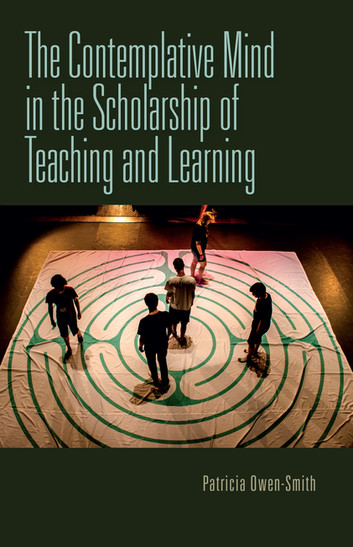In her newly published book, Patti Owen-Smith explores contemplative practices in the higher-education classroom and makes a case for its place within the framework of the scholarship of teaching and learning.

Owen-Smith was instrumental in the founding of Oxford’s theory-practice/service learning (TPSL) program, courses designed to integrate the theory of the classroom with experience in the local community. The emotional resonance with course material she witnessed in her TPSL students moved her to begin research on epiphanies in learning, a work that was the basis of her year-long appointment as a 2001 scholar in the Carnegie Academy for the Scholarship of Teaching and Learning.
The experience deepened her interest in the scholarship of teaching and learning (SoTL) and what she has described as “a deep and abiding commitment to and curiosity about affective development in college students and the ways in which it deepens cognitive development.” Affective development relates to emotions, attitudes, and feelings, while cognitive development relates to thinking, reasoning, and memory. The two, says Owen-Smith, are intertwined and intimately connected. She began exploring ways to give her students space to think and time for the stillness and reflection she sensed were too scarce in their lives.
Contemplative practices in the classroom
Contemplative practices are employed in many higher-education institutions, including Brown University, the University of Michigan, and West Point. The Association for Contemplative Mind in Higher Education is one of the major organizations that offers support to faculty members, scholars, and researchers who are incorporating contemplative inquiry in their classrooms. Owen-Smith attended some of its conferences and found there not only information and method but also a compelling energy.
About ten years ago she began incorporating contemplative practice into her teaching. In all of her classes, Owen-Smith begins with about three minutes of sitting practice, mindful breathing, and quiet reflection, calling students by striking a brass “singing bowl,” which produces a bell-like tone. If discussions become overheated or class processes get too chaotic, she sometimes uses the sounding of the brass bowl to re-center the class. Owen-Smith says that while not every student is on board at first with this practice, over time most of them embrace it, and many of them express gratitude for having a brief oasis of quiet in their day.
Bridging the gap
As an academic interested in both SoTL and contemplative practices, she realized that the two had much in common. Both are committed to improving the quality of teaching and learning and transforming higher education. Both give priority to changing habits of the mind, an understanding of the self, and the deepening of students’ attention and insight.
The aim of Owen-Smith’s book is the call for a return to the contemplative in higher education and a treatise on the place of contemplative knowing and contemplative practices in the scholarship of teaching and learning.
Although it includes discussion of how she uses contemplative practices in her own classroom, The Contemplative Mind in the Scholarship of Teaching and Learning is not a how-to manual. Rather, it outlines the principles and commonalities of both contemplative practice and SoTL and proposes the bridge that can be built between them, discussing the histories of both and defining contemplative practice in the classroom through the voices of current university and college teachers.
Owen-Smith does not shy away from acknowledging that there are hurdles and challenges to incorporating contemplative practices in the classroom. She meets straight on the arguments against it, bolstering her view with a review of current research, and she offers the reader a vision of how contemplative methods can inform and transform higher education in the twenty-first century.
Research for her book took Owen-Smith to Vietnam and Cambodia, where contemplative practices are incorporated into education from the earliest stages onward, and to Colorado’s Naropa University, the first US academic institution based on a Buddhist vision of contemplative education. In 2016, she received Oxford’s Gregory-Rackley Faculty Career-Development Award, which she used to study contemplative practice with a Buddhist monk at a retreat center in Costa Rica.
Transforming higher education
Owen-Smith gives special attention to the challenge of employing contemplative practice in a world inextricably tied to technology. “We are traversing a tension between our internal and external worlds and attempting to locate breath, meaning, and our own humanity in a world that is dominated by technological wizardry.”
Yet she ends her book with a note of hope: “For the first time in modern higher education, we are defining indexes of success and accomplishment that honor the importance of our humaneness rather than what can be merely performed and measured…[V]aliant educators committed to far-reaching transformation in the academy and subsequently in the world are leading the way.”
With her new book, Owen-Smith has provided an important resource for those who want to join their march.

